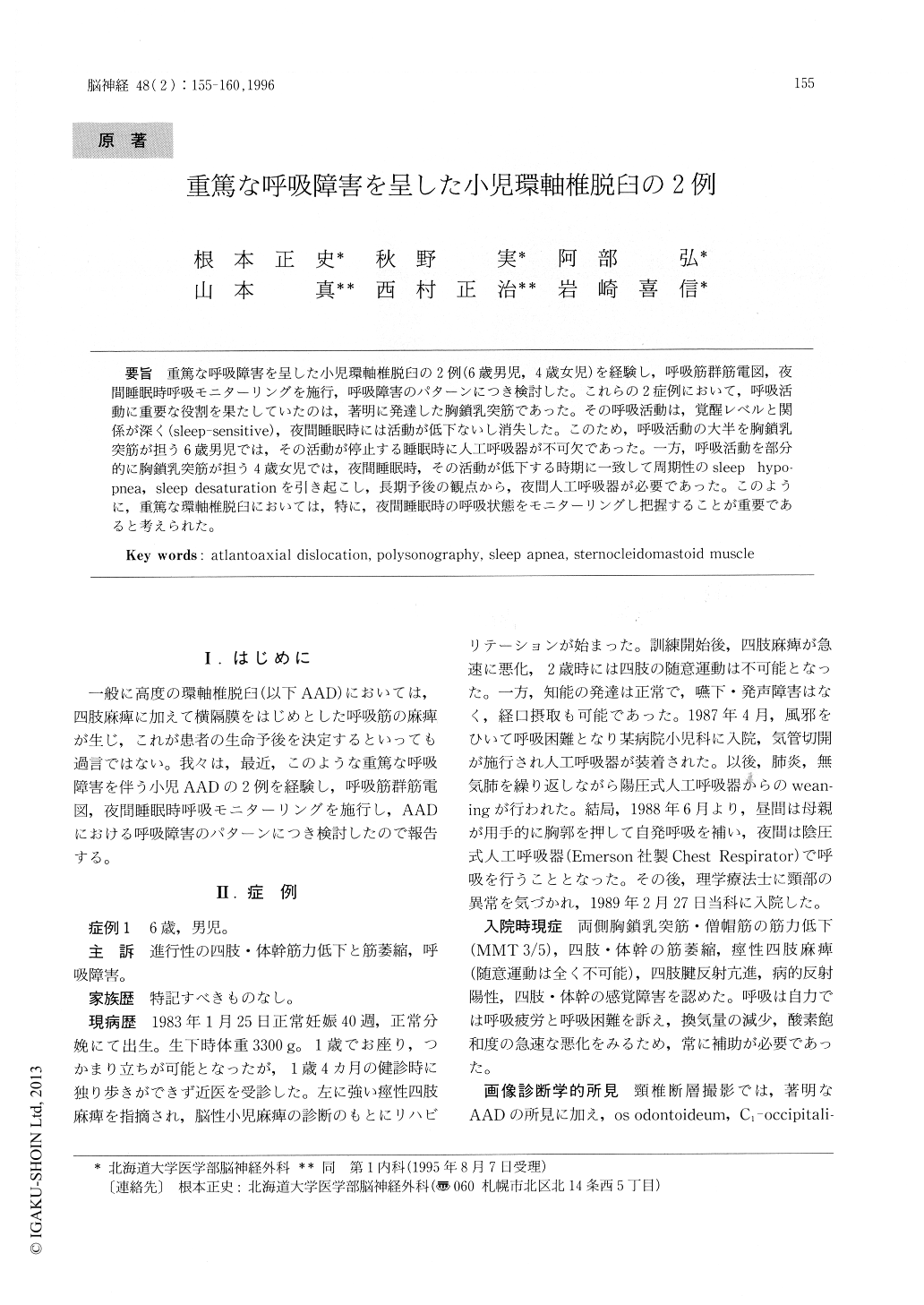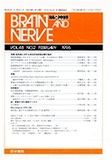Japanese
English
- 有料閲覧
- Abstract 文献概要
- 1ページ目 Look Inside
重篤な呼吸障害を呈した小児環軸椎脱臼の2例(6歳男児,4歳女児)を経験し,呼吸筋群筋電図,夜間睡眠時呼吸モニターリングを施行,呼吸障害のパターンにつき検討した。これらの2症例において,呼吸活動に重要な役割を果たしていたのは,著明に発達した胸鎖乳突筋であった。その呼吸活動は,覚醒レベルと関係が深く(sleep-sensitive),夜間睡眠時には活動が低下ないし消失した。このため,呼吸活動の大半を胸鎖乳突筋が担う6歳男児では,その活動が停止する睡眠時に人工呼吸器が不可欠であった。一方,呼吸活動を部分的に胸鎖乳突筋が担う4歳女児では,夜間睡眠時,その活動が低下する時期に一致して周期性のsleep hypo—pnea, sleep desaturationを引き起こし,長期予後の観点から,夜間人工呼吸器が必要であった。このように,重篤な環軸椎脱臼においては,特に,夜間睡眠時の呼吸状態をモニターリングし把握することが重要であると考えられた。
We performed electromyography and polysomno-graphy in two cases of atlantoaxial dislocation with ventilatory insufficiency to determine the patients' respiratory patterns. The results showed that hyper-trophic sternocleidomastoid muscles (SCMs) played an important part in their respiration. The diaphragm and intercostal muscles did not display marked electromyographic (EMG) activity, but the SCMs showed a great deal of phasic inspiratory activity during the daytime that decreased or disappeared during sleep.

Copyright © 1996, Igaku-Shoin Ltd. All rights reserved.


